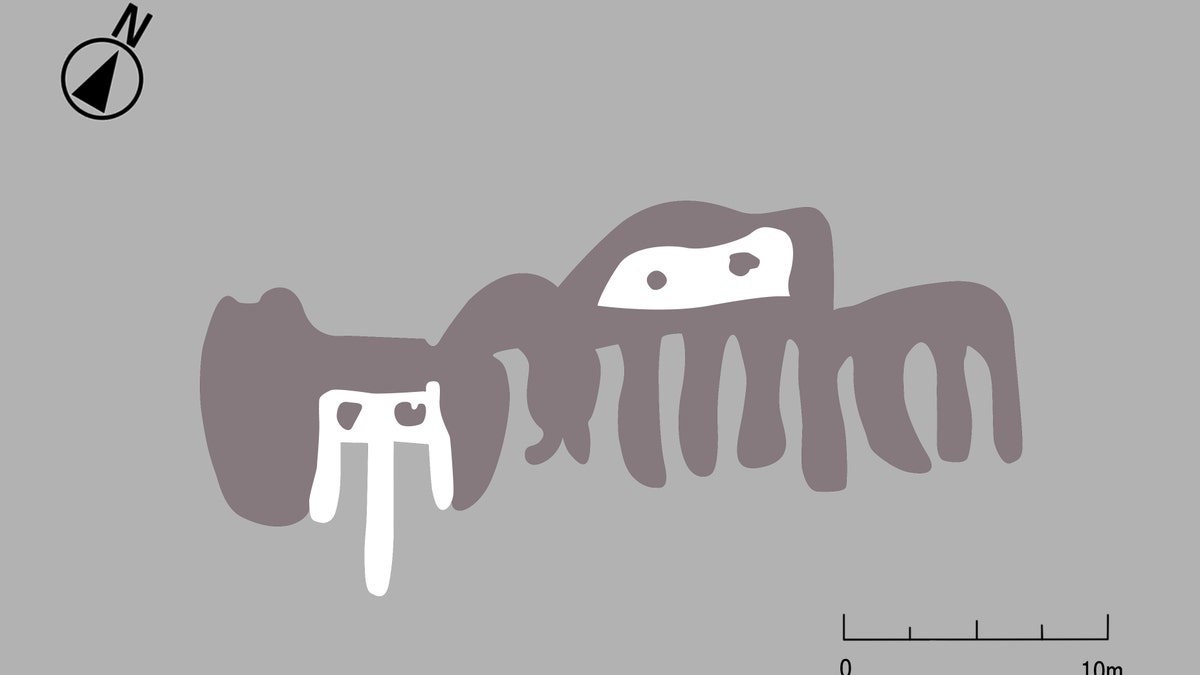
(Yamagata University)
Researchers from Japan’s Yamagata University working in the Nazca Pampas of Ica, Peru have announced the discovery of a geoglyph with quite a story to tell.
In the central area of the Nazca Pampas, near the Majuleos gully, the team discovered an image thought to be the depiction of an animal with its tongue sticking out, spotted markings on the body and many legs. The team believes that it represents an imaginary or mythical creature, and the scene is one of a decapitation.
Related: Buddhist sculptures discovered in ruins of ancient shrine
According to the team, the image was created using a technique from the Late Paracas Period, (400-200 B.C.) where darker surface stones are removed to expose the lighter ground beneath them. The removed stones are then piled up in order to shape the image.

(Yamagata University)
The team was in its eighth season on location and had discovered another geoglyph nearby in 2011. Both images are located on the slopes and the team said they were easily identified at the ground level.
Related: Shackled skeletons could be ancient Greek rebels
Masoto Sakai and Jorge Olano, of Yamagata University, wrote on the University’s website, “Between these two geoglyphs was found an ancient path leading to the ceremonial center of Cahuachi. We suspect that the geoglyphs were probably related to the pilgrimage to Cahuachi.”
